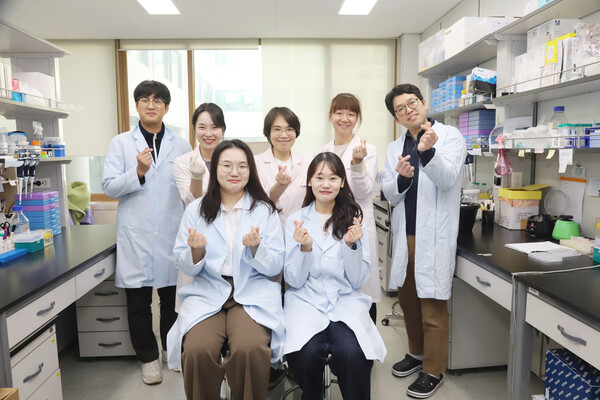Researchers at the Korea Research Institute of Bioscience & Biotechnology (KRIBB) have successfully developed a gene therapy for hereditary spastic paraplegia (HSP), a rare, incurable disorder.

HSP, a genetic neurological condition, leads to progressive stiffness and weakness in the legs, eventually resulting in paralysis.
The condition is relatively rare, with an occurrence rate of about 1.8 per 100,000 people worldwide.
The complexity of HSP is evident in its causation, involving over 80 different genes, making the development of treatments challenging. Until now, therapeutic efforts have primarily focused on alleviating symptoms such as lower limb spasticity and muscle loss.
To provide a better treatment solution, the team, led by Professor Jung Cho-rok at KRIBB's Biomedical Genomics Research Center, made a significant breakthrough by identifying the role of the ARL6IP1 gene (ADP ribosylation factor like GTPase 6 interacting protein 1) in the onset of HSP.
Their research revealed that ARL6IP1 is located in the mitochondria-associated ER membrane (MAM) and is involved in maintaining the homeostasis of cellular organelles.
It regulates nerve cell damage caused by neuroinflammation, and the team discovered that the loss of ARL6IP1 function leads to abnormal autophagy regulation, causing damaged mitochondria to accumulate in nerve cells and trigger neurodegeneration, leading to HSP.
Based on these findings, the team developed a gene therapy technique targeting HSP.
They have completed efficacy verification in an animal model.
The gene therapy involves using an adeno-associated virus (AAV) vector to deliver ARL6IP1, and mice with HSP treated with this gene therapy showed reduced lower limb spasticity, improved locomotion disorders, and improvements in brain tissue lesions and neuroinflammatory responses.
"This study is significant as it presents a new mechanism for HSP and opens up possibilities for gene therapy," Jung said. "I hope that KRIBB's formula of target discovery to mechanism verification to efficacy verification gene therapy development will be widely used in developing gene therapies for rare diseases in Korea.
The results of the research were published in Experimental Medicine.

